Carpenter cover letter template
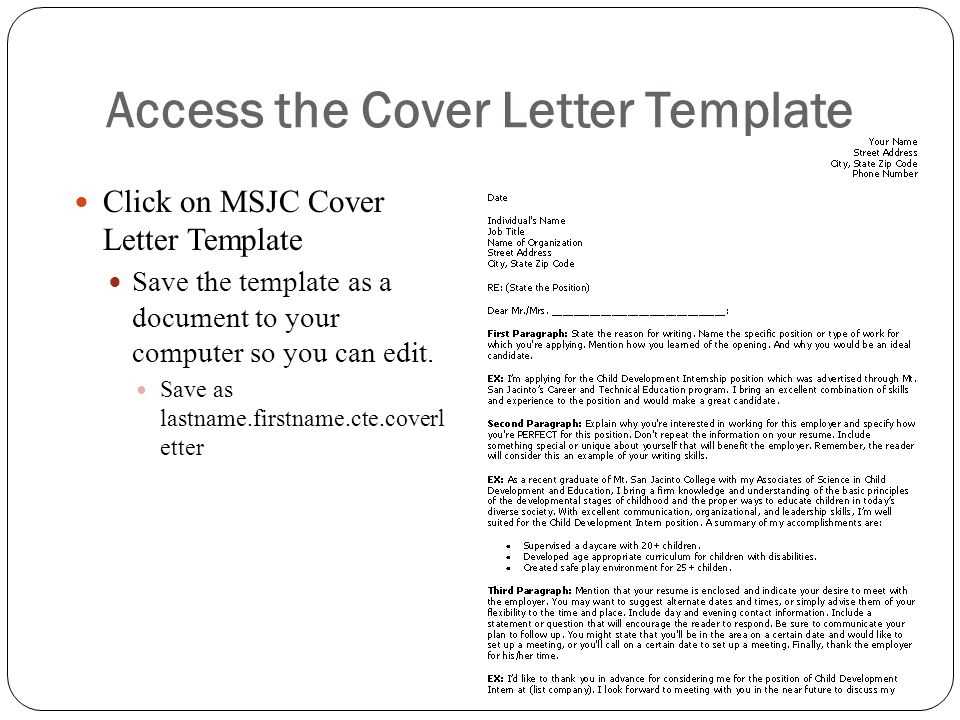
Tailor your carpenter cover letter to highlight your hands-on skills and attention to detail. Start by showcasing your experience with various materials and tools. Mention any specific carpentry techniques you excel in, such as framing, cabinetry, or finishing. Use strong examples of projects where you’ve contributed, emphasizing the quality of your work and your ability to meet deadlines.
Focus on your expertise: Include any certifications, training, or apprenticeships that validate your skills. Show how your knowledge aligns with the job requirements. If you’ve worked with specialized carpentry tools or technologies, mention that as well. Employers appreciate candidates who are ready to step in and get to work.
Prove your reliability: Detail your commitment to safety standards and problem-solving abilities. Talk about how you manage job site challenges, adapt to changes, and maintain a clean, organized workspace. A well-rounded carpenter who can adapt to different projects is always in demand.
Carpenter Cover Letter Template
Begin your carpenter cover letter by directly addressing the hiring manager. Mention the specific position you’re applying for and where you found the job listing. Provide a brief explanation of your experience, focusing on the skills and knowledge that make you a strong candidate for the role.
Highlight Relevant Skills and Experience
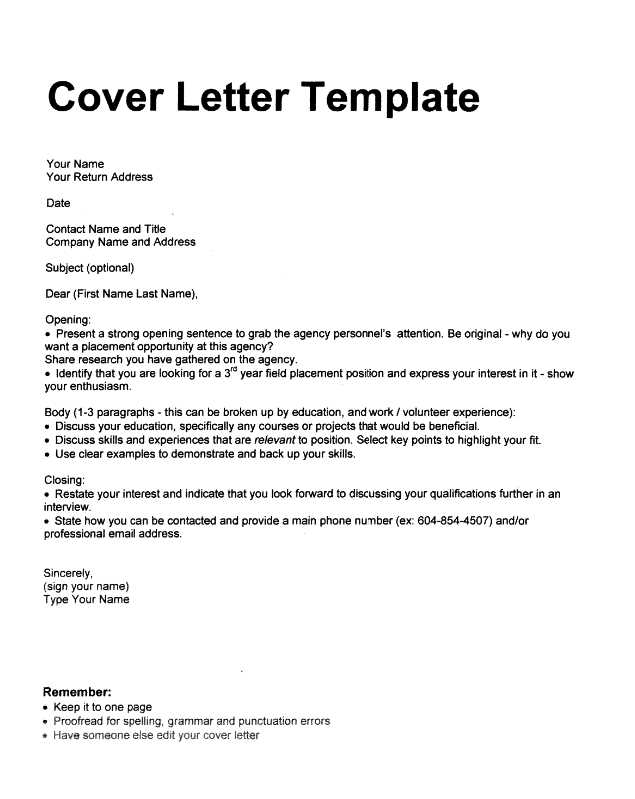
In the body of the letter, emphasize your hands-on experience in carpentry. Detail your expertise with various materials and tools, including any specific projects you’ve worked on, such as home renovations, furniture building, or commercial construction. Showcase your ability to interpret blueprints, follow safety protocols, and meet deadlines.
Closing and Call to Action
End your cover letter by expressing your enthusiasm for the opportunity. Reaffirm your interest in the position and invite the hiring manager to contact you for an interview. Mention your availability for a meeting and thank them for considering your application. Be polite and confident without sounding overly formal.
Highlighting Key Carpentry Skills and Expertise
Showcase your proficiency with tools like power saws, drills, and planers. Being able to work with precision and attention to detail is crucial in producing high-quality work. Highlight your expertise in measuring, cutting, and fitting materials accurately, ensuring a perfect finish every time.
Make sure to mention your experience in working with different wood types and materials. Understanding their properties and how they interact with various finishes and environmental factors sets a skilled carpenter apart. Your ability to choose the right material for each project speaks volumes about your expertise.
Emphasize your ability to interpret blueprints and construction plans with ease. A solid grasp of architectural design principles allows you to transform plans into functional, durable, and aesthetically pleasing structures. Mentioning your experience in custom carpentry can showcase your adaptability and creativity in crafting unique pieces.
Having a solid grasp of safety protocols ensures that every project runs smoothly. Stress your commitment to maintaining a safe working environment for both yourself and others. Your experience with managing worksite hazards and following safety standards highlights your professionalism.
Demonstrating Experience with Specific Projects
Highlight the concrete results you’ve achieved in past projects. Focus on how you handled tasks, solved problems, or added value in each role. For example, mention any particular types of carpentry work you completed–such as custom furniture, cabinetry, or framing–that showcase your skills. Emphasize how you used tools or materials effectively to meet deadlines and customer needs.
Showcase Successful Project Completion
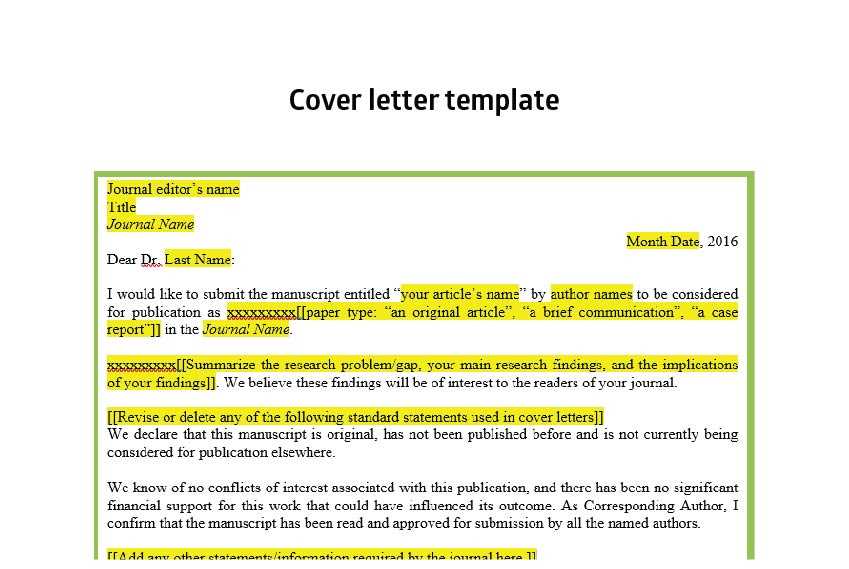
Share details of a challenging project you managed from start to finish. Describe the project scope, the timeline, and any obstacles you overcame. Provide examples of how your craftsmanship led to a successful completion, and highlight any client feedback or follow-up work that reflects your attention to detail and dedication to quality.
Demonstrate Problem-Solving Skills
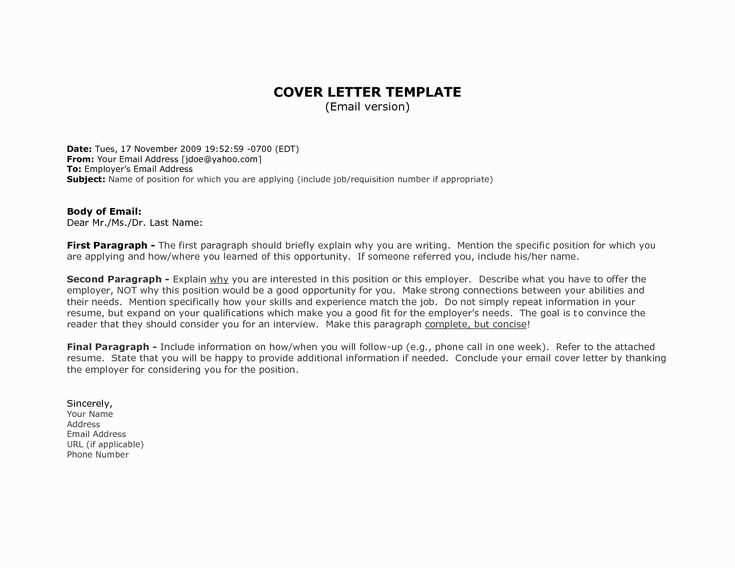
Include examples where you had to think creatively to resolve issues. Whether it was working with tight spaces, matching materials, or ensuring structural integrity, show how you approached the problem and found solutions. This illustrates both your technical ability and your capacity to adapt to each situation.
Got it! How can I assist you today?
Closing with a Strong Call to Action
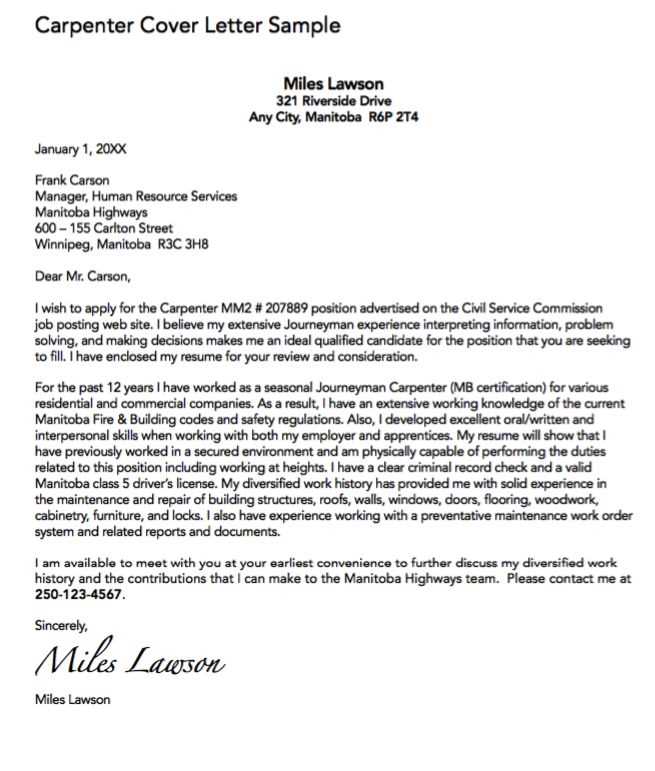
Finish your carpenter cover letter with a direct call to action. Make it easy for the hiring manager to understand the next step and express your enthusiasm about moving forward in the hiring process.
- Invite them to contact you for an interview, highlighting your flexibility with scheduling. Example: “I am available at your earliest convenience for an interview.”
- Be clear and concise. Mention how you look forward to contributing your carpentry skills and expertise to their team. Example: “I am excited about the opportunity to bring my skills to your company.”
- Reaffirm your interest. Briefly state why you believe you’re a great fit for the role, based on the job description and your experience. Example: “With my years of carpentry experience, I am confident I would add value to your team.”
Keep your tone friendly but professional. A strong closing statement helps leave a lasting impression and shows that you’re serious about the role. Make sure to thank the employer for considering your application and express your desire to connect soon.
Reviewing and Editing Your Cover Letter
Read your cover letter aloud to catch awkward phrasing or mistakes that may have been overlooked. Focus on clarity and conciseness. Eliminate unnecessary details that don’t directly support your application.
Check for Specificity
Ensure you highlight your carpentry skills with clear examples. Avoid generic phrases and instead focus on what sets you apart. Mention specific projects or tools you’ve worked with to demonstrate your hands-on experience.
Proofread for Errors
Look for spelling, grammar, and punctuation errors. A cover letter with typos can leave a negative impression. Use tools like spell-check and ask someone else to review it for fresh eyes.